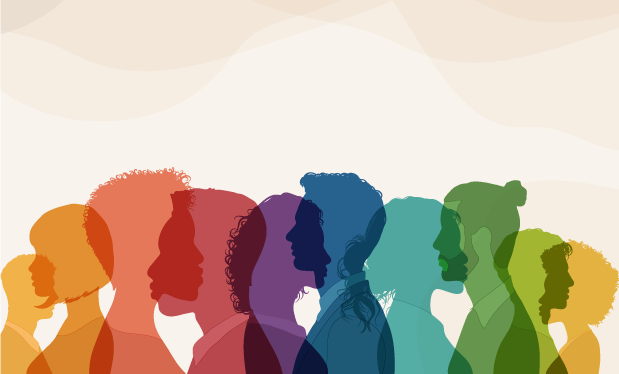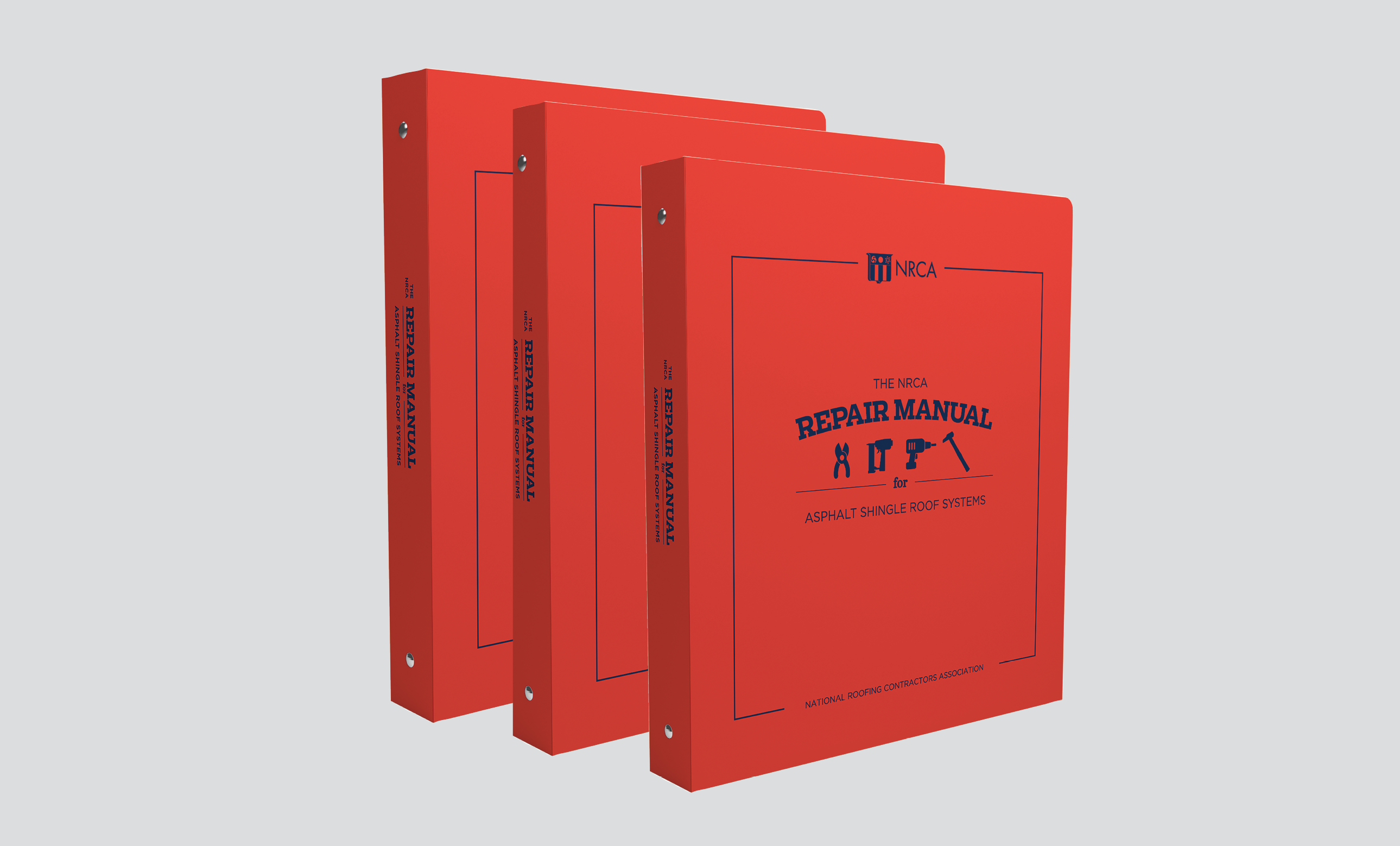
It was a hot, humid summer day in Cleveland when I began my new job as a project coordinator with a roofing contractor 10 years ago. Driving to my new place of employment, I had the air conditioning on full blast to cool me down and calm my nerves. I knew full well what I was about to walk into: a male-dominated work environment. And though I had been around the trades most of my life because my parents owned a small general contracting business, I was nervous.
I had been around roofing workers before and heard the crude remarks, caught the wandering eyes and felt the intimidation. I had more than a case of new-job jitters; it was a looming self-doubt I would be belittled. Thoughts raced through my head whether I would be taken seriously by the men I would lead and the project teams I would manage. As I walked through the door, I remember thinking “act as if.” Act as if I belonged. Act as if my confidence flourished despite my racing heartbeat. Act as if the clothes I was wearing weren’t uncomfortable because I wanted to assimilate and be as nonfeminine as possible. Act as if I had no emotions. Act as if I wasn’t myself.
Fortunately, the first day ended up being OK. Was it great? No. Was it tolerable? Yes. Was I able to work extra hard to prove myself and my worth? Absolutely. Nearly nine years later, I was named vice president of the company, something I am extremely proud of accomplishing. However, I’m the exception to the rule. Not every woman is given the same opportunity or in an environment where her work is valued and her achievements are acknowledged and rewarded.
My story is a happy one, but it wasn’t all sunshine and rainbows. I faced challenges being a woman in the roofing industry—sexist remarks, microaggressions and tasks assigned to me because I am a woman, such as ordering lunch or planning parties. Things that made me cringe when I was asked to do them, but I politely obliged. At one point, I was threatened to be raped by a subcontractor for not approving his payment application. And what did I do when I was threatened? I acted as though it didn’t bother me.
There are too many stories like these within our industry that go unheard, and this is why diversity, equity and inclusion are vital. Many people from historically excluded groups have told me about their unique challenges and experiences in the roofing industry. The common thread to their stories? People have been made to feel they have to act as if they’re someone they’re not.
If we want our industry to thrive and grow with talent and employee engagement, we can’t expect people to “act as if” they feel a sense of belonging. If we want people to perform well, they have to feel good about themselves and their work environments. Bottom line: We need to do better, and we can.
Diversity, equity and inclusion, or DEI, have been popular buzzwords since 2020. However, there are many misconceptions about their meaning and intent. Diversity, equity and inclusion are not challenges or threats. They offer an opportunity.
If you are like other roofing professionals, your company has experienced a labor shortage. I believe DEI is the answer to that problem. DEI strategies can strengthen your business and employee experience; you just need to do the work.
Diversity
According to Merriam-Webster, the definition of diversity is: “the condition of having or being composed of differing elements; variety, especially: the inclusion of people of different races, cultures, etc., in a group or organization.”
Diversity often is what you can see: age, gender, race, ethnicity, etc. However, diversity goes beyond that. It also applies to diversity of thought and experience, sometimes referred to as neurodiversity. Harvard Medical School describes neurodiversity as “the idea that people experience and interact with the world around them in many different ways; there is no one ‘right’ way of thinking, learning and behaving, and differences are not viewed as deficits.”
Diversity is important because it drives a spark in thought creativity and innovation, which leads to greater production and profitability. Imagine a room full of people all with the same mindset. How much “thinking outside the box” would occur? We need diverse groups to move past the status quo.
Per a report by McKinsey & Company, “ethnically and culturally diverse companies are 33% more likely to be more profitable.” Diverse teams can help cut through the confusion and enhance problem solving. A study by The New York Times detailed that “interacting with diverse groups produces answers that are 58% more accurate.” And Deloitte research showed “diversity and inclusivity in a team setting improved decision-making quality by 20%.”
Diversity is the key to broadening your production and talent pool horizons. However, it’s one thing to have a diverse team and quite another helping people feel included. You can hire the most diverse team on the planet, but if you aren’t creating an inclusive culture and environment, you’re basically wasting your time.
Equity
Equity is probably the most misunderstood component of DEI and often confused with equality. However, equity goes beyond equality to ensure fair opportunity and access for each employee to succeed. The Oxford Dictionary defines equity as “a system of natural justice allowing a fair judgment in a situation which is not covered by the existing laws.”
When I was working for that same roofing contractor, the company had a strict 7:30 a.m. start time. Tardiness was not tolerated, and corrective action was implemented when employees were continually late. There was a foreman who had a habit of coming in late, and the leadership team was on the verge of firing him. I asked to talk to him first to figure out what might be going on. He told me he was in substance use recovery and was going to a clinic to receive medication certain mornings to help him stay sober. Sometimes, the line was long, which would cause him to be late.
Once I learned that, he was granted a flexible start time—an equitable start time. The best thing for him was staying healthy, and that surpassed the rule of punctuality. Why? Because treating employees equitably allows the best possible outcome for the individual and the company. Had we fired him, we would have lost talent and spent time and money finding a new hire. And he would have the stress of having to find a new job. It made sense to offer the flexibility he needed to show up the best version of himself every day even if he sometimes arrived later than we would have liked.
Another example of equity is to think about a track with runners at the starting line. If the runners have a literal “equal” starting position, it wouldn’t give each runner the same fair opportunity and access to win because the inner laps are shorter than the outer laps. This is why races use equitable, staggered starting positions to ensure fairness for all participants.
Imagine giving all your roofing crews the same tools and materials for the day: a hand welder and some TPO material. However, one crew is on a shingle tear-off; one is on an EPDM repair; and one is working with TPO. A heat gun is great for the TPO crew but isn’t going to help the others. Giving everyone the same tools is equal, but it’s not equitable. The crews working with shingles and EPDM don’t have what they need to succeed.
Inclusion
The Cambridge Dictionary defines inclusion as: “the act of including something or someone as part of something.”
Inclusion is an action; it’s a feeling. The only true way of getting key performance indicators on inclusion is getting input and feedback from your team. Inclusive leadership creates employee engagement and a sense of belonging. It’s a constant moving machine driving the culture forward in a positive way to create an environment where every person feels they have a purpose and that they are seen and heard for who they are as individuals.
Think of a time when you were excluded from something. Maybe it was being chosen last for a team, not being invited to a party or being shunned by your peers at school. How did it feel? As humans, we all have experienced the sting of exclusion at some point in our lives. Now, imagine that happens day after day in your place of employment. How would you feel? How would your productivity be? How engaged would you be with your team and your work?
Often, we confuse an employee’s satisfaction with engagement. They’re two different qualities. Being satisfied means an employee likes his or her job, but the factors are missing for full engagement. Leading and acting on inclusion motivates employees to want to do their assigned tasks not just merely doing what is assigned to them.
Inclusion brings purpose and allows employees to be their authentic selves and synthesize their motivation with their work. A Gallup poll shows “engaged employees are psychologically committed to their work, go above and beyond their basic job expectations, and want to play a key role in fulfilling the mission of their organizations.”
So how does inclusion affect roofing? If you have a service tech out on a work order, and she is fully engaged in her work because the culture fosters a sense of belonging, how likely is it she will go above and beyond and get the job done right the first time? It is highly likely and more likely than an employee who is simply “satisfied.” A satisfied employee may enjoy the company, pay and benefits, but is the culture giving that employee a true sense of feeling included to the point of full engagement and the desire to perform well? The satisfied employee might go to the job site and fulfill the work order but not feel the motivation to walk the roof for other potential issues, talk to the customer, take the right amount of pictures, fill out the work order completely, etc.
The key to fostering a company culture of inclusion is making sure employees are seen and heard. This means clear communication and the opportunity to hear input without fear of retribution. This also means having uncomfortable conversations. If an employee has an idea or an issue, he or she should be able to express, respectfully, his or her thoughts. This doesn’t necessarily mean every request is granted, but an environment that allows a free flow of communication creates inclusion and engagement. Providing freedom to express thoughts and feelings is called psychological safety. Uncomfortable or time-consuming conversations have a huge return on investment in the long term.
Communication from leadership with transparency is another key component. If your employees don’t know about something, it doesn’t exist. Perception is reality. This is where companywide meetings, lunch and learns, team-building events and state of the company addresses are vital. Talk to your employees and tell them the “why” for everything they do. Telling someone why they need to do something and why it’s important creates purpose, which leads to engagement.
Tying it together
Employing DEI initiatives within your company can help you confront the current labor shortage facing the industry. Consider:
- An Indeed survey found “55% of job seekers say it is very important or extremely important to work at a company that prioritizes diversity and inclusion.”
- A Glassdoor survey details “a staggering 2/3 of job seekers take a look at a company’s diversity when job hunting.”
- A Deloitte study found “organizations with inclusive cultures have higher retention rates and greater productivity rates. They are able to focus on retaining and developing talent, instead of constantly trying to backfill a revolving door of resignations.”
Although I am no longer employed by a roofing contracting company, I genuinely care for the roofing industry, and I have a passion for DEI. By embracing DEI initiatives, you can ensure a steady pool of talent, a more engaged workforce and people who want to be in roofing. No longer do I “act as if” now. Rather, I take authentic action.
So I ask: Are you simply “acting as if” or are you courageous enough to lead with authentic action to elevate this great industry? Diversity, equity and inclusion are the future, and now is the time to seize this opportunity and embrace it.
MANDY McINTYRE is owner and president of Level Up Consultants, Cleveland.
For an article related to this topic, see “Working with diversity,” February 2008 issue.



